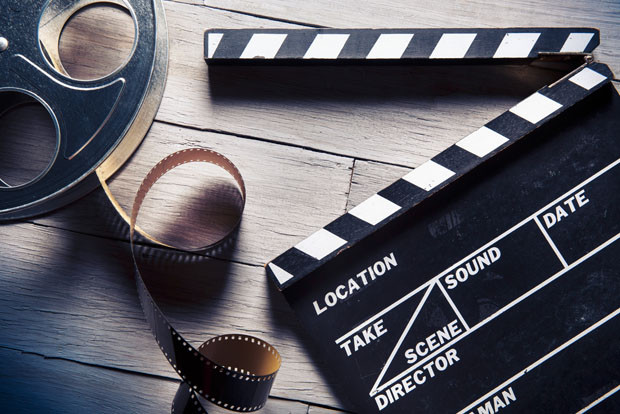Since NowThis shut down its website last year to publish exclusively on social feeds, the news outlet has seen its audience engagement soar, hitting one billion monthly video views for the first time in January 2016.
This achievement is attributed to NowThis focusing on its distributed content strategy, where it aims to understand what audiences want on different platforms before producing story selections, rather than adapting stories to fit the different platforms.
As Facebook Live has been enabling publishers to engage with their audiences directly, NowThis has been quick to experiment with the platform across its range of Facebook pages, including NowThis News, NowThis Election and NowThis Entertainment.
Alyssa Kurtzman, senior live producer, NowThis, told Journalism.co.uk the news outlet aims to publish around three live streams a day, keen to use the format to engage with its audience over a combination of regularly scheduled shows, such as doing TV recaps or a round-up of the week's stories, and more spontaneous filming like rallies or protests.
"In any given day, 75 per cent or more of our content has already been planned out, which not only ensures we are doing enough lives, but is also helpful in terms of preparation for those, behind and in front of the camera," said Kurtzman.
"If something starts trending, news breaks or we have a quick idea, we'll do a spontaneous live stream, but generally we organise them days or weeks in advance – consistency is something that we use to build trust with our audience, and so if we get 90 to 100 a month, we've had a good month."
The four year old publisher often uses smartphones to broadcast live when out in the field during breaking news, but is taking advantage of the Facebook Live API that enables users to stream video from professional DSLR cameras and multi-camera set-ups.
"It has been a really big step for us, because it allows us to tell a story in a better quality, and to show certain things, like a panel conversation for example, that we wouldn't want to do with one camera," said Kurtzman.
"But if we do use phones, we don't find that the content ever suffers – if we are telling an interesting story, our audience will watch and listen regardless."
By using the Live:Air Solo app, which allows them to switch between shots, stream footage from their computers and add graphics and text, the core team of three producers behind Facebook Live at NowThis is able to use existing videos that they already have pre-recorded to heighten live videos.
"Sometimes people write in the comments that they don't believe we're live because it is so highly produced, and we sometimes respond to them directly to prove it," said Kurtzman.
"When you demonstrate to your audience that you're listening to them and that it's a two-way conversation, the engagement shoots up, it's incredible actually.
"People like to know that they're being heard, and when you are interacting with them or using their questions towards the interviewee, or just saying 'so and so had a really interesting point to say about this', they know their voice is being heard by thousands of people that they don't know but who are also interested in the topic."
Kurtzman noted that audiences are also drawn in by great visuals because they make streams entertaining to watch, such as when they streamed a man climbing the side of the Trump Tower, or when they tried Olympic cupping live in the studio, which was fun but also relevant to the news agenda.
Each scheduled live stream is monitored by a member of staff on a desktop computer and one or two others operating the cameras, while it is presented by one of a number of producers at NowThis.
The team looks to improve the streams, with staff giving each other regular feedback. The presenters are even attending a workshop at the end of August with an improvisation coach to help them be more comfortable ad-libbing on camera.
But the logistical elements of producing the streams have not been as challenging as tackling the technology, said Kurtzman.
"We've learned a lot from the technical issues that come from this being so new. Our cameras were dropping out a lot at the beginning as we were using the same WiFi as the whole office, but now we have switched to a private router to help prevent those issues – the internet is never as reliable as you want it to be.
"When we filmed the Republican and Democrat conventions, we didn't have quite a reliable connection there, so what we ended up doing was downgrading the quality to 720p instead of 1080p.
"But if it means getting a stream that is not cutting out versus having a really choppy stream, I'd always rather downgrade the quality because people are mainly watching on their phones."
Kurtzman explained the story is still the most important thing, and that experimenting with different types of content will help publishers find out what their audiences want.
"I like to tell my camera operators to make it feel like the presenter is FaceTiming the audience through our cameras, as we want our audience to feel like we want them here with us," she said.
"Now publishers are fortunate enough to hear back live from the people who are watching as to what they want to see and what they want to know, so my advice to publishers would be to lean into that and embrace all of the tricks and the quirks of Facebook Live.
"Don't condescend to your audience by giving something that is half-arsed – be smart and make something that looks good."
Free daily newsletter
If you like our news and feature articles, you can sign up to receive our free daily (Mon-Fri) email newsletter (mobile friendly).












